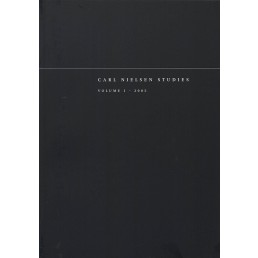Carl Nielsen and Intentionality. Concerning the Editing of Nielsen’s Works
DOI:
https://doi.org/10.7146/cns.v1i0.27722Abstract
Compared with the ongoing debates in modern text criticism, problems concerning music editing – in particular with regard to nineteenth and early twentieth-century music – has only received scant attention. The present article seeks to explore the theories of editing modern texts with the editing of Nielsen’s musical works. There are three main sections: the first presents modern Anglo-American discussions on understanding the complexities of authorial intention and its function in an editing process. Though Gregg’s copy-text method (1950) is still very much in use, modern text critics, notably McGann, have often argued in favour of a different approach towards the concept of ‘authorial intention’, seeking to include the social context or setting; according to Tanselle, however, no satisfactory method has been proposed which could take these aspects into consideration. The second section deals with the understanding of the work-concept of music. This leads to the proposal of distinguishing between score, notation and performance when dealing with musical works. The distinction is made between those elements which are part of the work and those elements which rely on performance and performance practice conventions. The article concludes with three case studies of Nielsen’s works illustrating the complex problems concerning the determination of authorial intention – final as well as original – and the employment of versions. The works dealt with are Symphony no. 1 (1894), Masquerade (1906) and Andante tranquillo e Scherzo for string orchestra (1887).Downloads
Published
2003-04-10
How to Cite
Hauge, P. (2003). Carl Nielsen and Intentionality. Concerning the Editing of Nielsen’s Works. Carl Nielsen Studies, 1. https://doi.org/10.7146/cns.v1i0.27722
Issue
Section
Articles
License
- Authors retain copyright and grant the journal right of first publication with the work simultaneously licensed under a Creative Commons Attribution License that allows others to share the work with an acknowledgement of the work's authorship and initial publication in this journal.
- Authors are able to enter into separate, additional contractual arrangements for the non-exclusive distribution of the journal's published version of the work (e.g., post it to an institutional repository or publish it in a book), with an acknowledgement of its initial publication in this journal.

